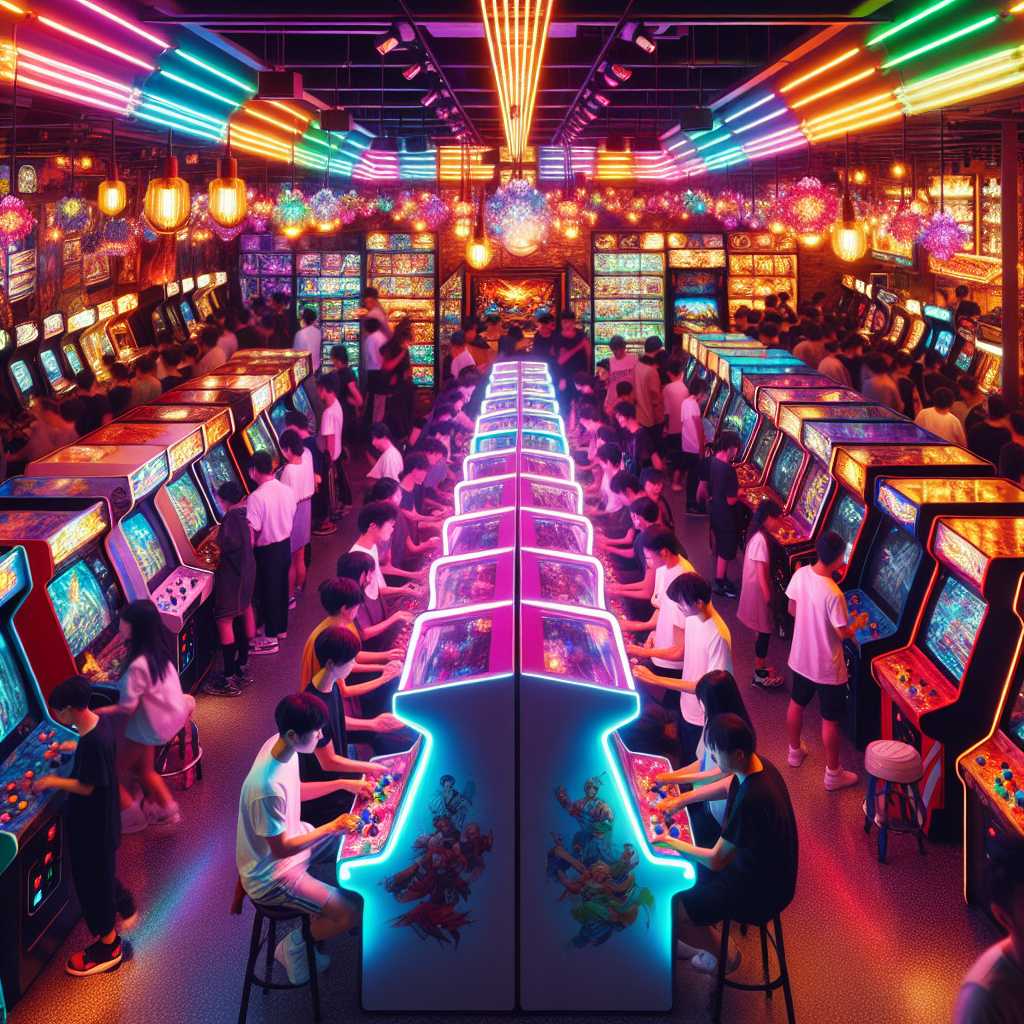## Exploring the Evolution and Impact of Arcades: From Pinball to eSports
Arcades have been a significant aspect of gaming culture, providing a social space for individuals to gather, engage with groundbreaking technologies, and immeran interactive experiences. Throughout the modern era, arcades have evolved from the electromechanical games of the past to today’s complex and networked gaming environments that are part of the high-stakes eSports world.
The Origins and Early Innovations of Arcade Games
The arcade phenomenon began with early amusement park games and mechanical coin-operated devices that offered entertainment in public spaces. These early machines paved the way for more sophisticated electromechanical games like pinball, which became popular in the mid-20th century. Although initially rudimentary, these games laid the grounds for technological innovation in interactive entertainment.
The true arcade game boom, however, came with the advent of electronic video games in the 1970s. The release of titles such as “Computer Space” and “Pong” set the scene for a new form of leisure activity that quickly captured the imagination of youths around the world. As technology progressed, the aesthetics, complexity, and narratives within arcade games grew exponentially.
The Golden Age and Rise of Iconic Video Games
The golden age of arcade video games lasted roughly from the late 1970s to the mid-1980s. During this time, legendary games like “Space Invaders,” “Pac-Man,” “Donkey Kong,” and “Asteroids” became cultural icons. These games were not only innovations in terms of gameplay but also in immersive sound and visual design, which would inspire both passion and competition amongst players.
This period also brought about high score leaderboards, which introduced an element of competition into arcade gaming that was otherwise absent in home gaming experiences. Players now had a reason to return to arcades — to beat their or others’ scores and achieve local, and sometimes international, fame within communities.
Economic Impacts and Social Spaces
As arcades flourished, they significantly impacted local economies by creating jobs and providing family-centred entertainment destinations. These vibrant social hubs converged various demographic groups—breaking down barriers and common socioeconomic bounds—allowing for a unique communal experience centered on shared gaming interests.
Moreover, they became fertile grounds for game developers who wished to push the envelope with innovative content and technological advances. Compared to home consoles, arcades were equipped to run more powerful hardware, fostering a culture of continuous improvement and driving game design forward.
The Decline and Transition of Traditional Arcades
The rise of home consoles unavoidably led to a shift in how video games were experienced. As gaming systems like Nintendo’s NES captured market share with lower costs over time and increased convenience, traditional arcodes saw a dwindling clientele. By the turn of the millennium, many iconic arcades had closed their doors or reinvented themselves other forms of business.
However, rather than vanishing completely, the essence of arcade gaming survived through various evolutions. The remaining establishments often catered towards nostalgia for previous generations while also appealing to new audiences through food, drink, and updated game experiences.
Modern Arcades and The eSport Connection
Today’s redefine what arcade could be; they’ve morphed into multi-use spaces that offer not just classic retro games but also VR experiences, modern gaming consoles, restaurant-quality food options, tournaments, and even facilities for competitive gaming events known as eSports.
eSports has effectively brought back the social competitive element at an escalated level with professional gamers earning accolites akin to traditional sports stars. Many modern game arcades serve as venues for local eSports competitions, underscoring their significance within this new era of competitive entertainment.
Notes
Image Description
A bustling modern arcade with neon lights above rows of various classic arcade cabinets, players focused intensely screens some who are gathered around a multiplayer fighting game launching animated attacks amidst cheers.

